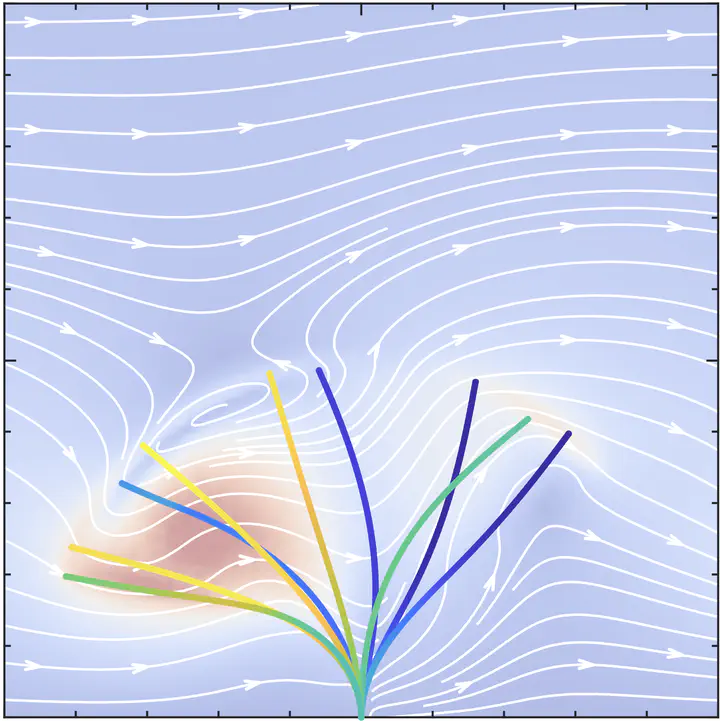A multiscale biophysical model gives quantized metachronal waves in a lattice of beating cilia

Abstract
Understanding the emergence and properties of metachronal waves (MWs) in ciliary arrays is a multiscale problem central to developmental biology, transport phenomena, and nonequilibrium physics, and with potential biomedical applications. For 1D lattices of cilia, we report key mechanisms that lead to the robust emergence of MWs. Our modeling framework incorporates the full microscopic details of beating cilia. This helps us understand how ciliary bed morphology, beating patterns, and steric and hydrodynamic interactions work together to shape the emergent dynamics on 1D lattices. Due to the novelty of our modeling and computation, we have unraveled the spatiotemporal self-organization of nanometeric motor proteins in coordinating collective dynamics spanning millimeters: bridging length scales over six orders of magnitude.Motile cilia are slender, hair-like cellular appendages that spontaneously oscillate under the action of internal molecular motors and are typically found in dense arrays. These active filaments coordinate their beating to generate metachronal waves that drive long-range fluid transport and locomotion. Until now, our understanding of their collective behavior largely comes from the study of minimal models that coarse grain the relevant biophysics and the hydrodynamics of slender structures. Here we build on a detailed biophysical model to elucidate the emergence of metachronal waves on millimeter scales from nanometer-scale motor activity inside individual cilia. Our study of a one-dimensional lattice of cilia in the presence of hydrodynamic and steric interactions reveals how metachronal waves are formed and maintained. We find that, in homogeneous beds of cilia, these interactions lead to multiple attracting states, all of which are characterized by an integer charge that is conserved. This even allows us to design initial conditions that lead to predictable emergent states. Finally, and very importantly, we show that, in nonuniform ciliary tissues, boundaries and inhomogeneities provide a robust route to metachronal waves.All study data are included in the article and/or supporting information. The simulation code is available upon request to the authors.